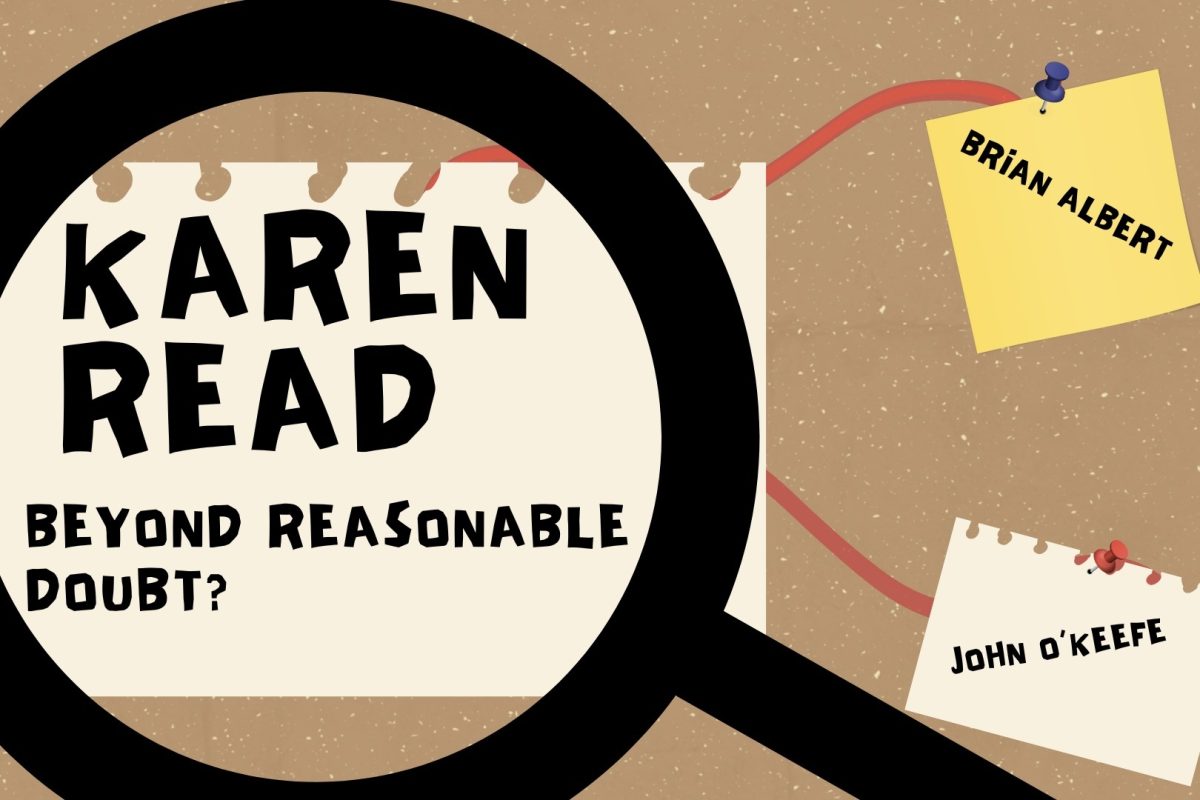You may have heard the name Karen Read. You may have heard about Karen Read so often that you find yourself wondering “Who is Karen Read?” and “What is her trial and why is it so complicated?” While this case is confusing, there’s a severe lack of evidence and Read should not be convicted of this crime.
On Feb. 1, 2022, Read was charged with the murder of her boyfriend, Boston Police Officer John O’Keefe who was killed on Jan. 29. After a night of drinking on January 28-29, 2022, in Canton, Massachusetts, Read drove O’Keefe to the home of Officer Brian Albert for a late-night party. The events from the time O’Keefe was dropped off (around midnight) to and when he was found dead near 6:00 a.m. in the snow outside Albert’s home, have remained unclear. Although there are many theories as to what had happened, there is little conclusive evidence.
The police and prosecutors claim that Read killed O’Keefe by backing into him with her car, yet the autopsy of O’Keefe’s body failed to prove his manner of death was from a motor vehicle. The official cause of death was listed as hypothermia and blunt impact injuries to the head. This is the most crucial part of the evidence (or lack thereof) to cause reasonable doubt. Investigators for the town of Canton and the State of Massachusetts introduced various pieces of evidence relating to Karen Read’s car, involving shattered fragments of a taillight. However, the defense introduced reasons to doubt the accuracy of the acquisition of this evidence. Without lower body wounds on O’Keefe’s body, the Jury is left to wonder how a person could be killed by a car without lower body injuries. Since then, numerous theories, podcasts, protests and investigations have captivated the Massachusetts community of Canton and surrounding towns.
This case is complicated and feels like it was dropped out of an episode of Law and Order. There is a division of people between those who think she did it, those who think she didn’t and those who believe she may have, but there isn’t enough evidence to convict.
This case brings up a concept known as “Beyond a Reasonable Doubt.” “Beyond a Reasonable Doubt” essentially asks if the prosecution’s case is strong enough to convince the average person of their case without doubt. This is the legal burden put on the prosecution in any criminal trial. In Read’s trial, the prosecution set out to prove that she killed John O’Keefe by backing into him with her car and leaving him for dead. The prosecution failed to live up to its burden of proving beyond reasonable doubt that John O’keefe was even hit by a car, let alone killed by it. This is why this case failed to achieve a guilty verdict.
Read’s defense team claims investigators framed her and that O’Keefe’s murder led to a police cover-up to protect one of their own. The defense team introduced multiple theories of botched investigation with unclear evidence and suspicious chains of evidentiary custody. The story has been ever changing over the last two years, with the trial beginning in April 2024 and ending in a mistrial in July 2024. It was ruled a mistrial because the Jury was “deeply divided.” The defense’s argument is well backed and highlights what may be a severe internal problem in the local police department of Canton and possibly even the state of Massachusetts.
To further complicate this trial, it came to light that after the mistrial was declared and the Jury was dismissed, the Jury on Read’s trial had reached a consensus of Not Guilty on two of the three counts for which Read was tried. On counts one and three, the Jury agreed Read was innocent and failed to communicate this appropriately to the judge. It was only on count two (Manslaughter) that the Jury was divided and could not reach a consensus. This further hints of a corrupt legal system because Read should only be tried again on count two rather than on all three counts.
When adding up all of the variables and elements of this case, it comes back to reasonable doubt. The Jury’s division and uncertainty on count two and its consensus on counts one and three support the idea that the prosecution failed to prove Karen Read’s guilt beyond a reasonable doubt, and therefore she should receive a not guilty verdict on all three counts.



























